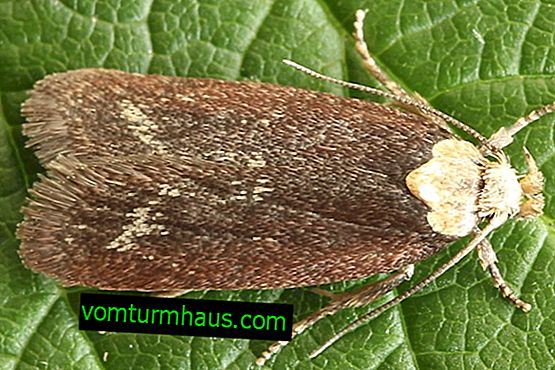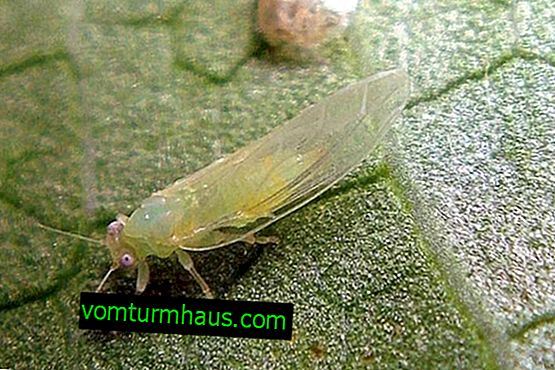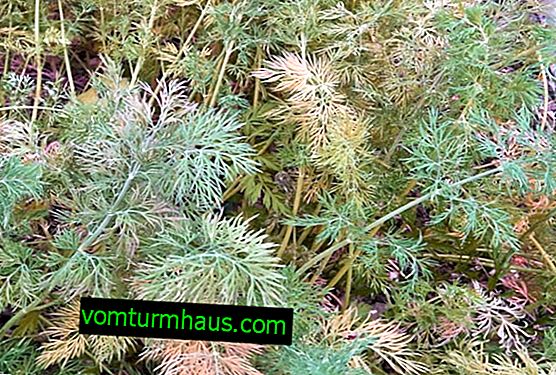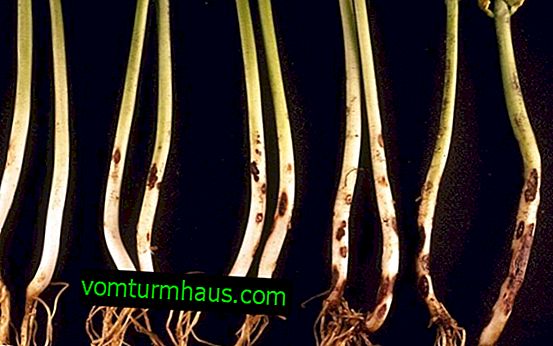Planting dill in the open ground in summer
Among the many green herbs used in cooking, dill can be safely called the most popular herbs. He was fond of culinary experts and gourmets for their spicy qualities, refreshing the taste and smell of any dish, as well as for having an impressive array of useful properties. The advantages of spice should also be added to the simplicity of planting and a simple cultivation process. In the article we will tell you whether it is possible to independently grow good dill crops from seeds, and when it is best planted.
Did you know? The energy value of dried dill is several times higher than that of its fresh herbs.
Features of growing dill
Growing dill on greens, although a simple task, but still has its own nuances. If they are not taken into account when cultivating a crop, the crop may turn out to be insufficiently high-quality and generous.
Features of growing spices:
- the culture has early sowing dates (it is permissible to sow at the end of November or in March, when the snow has already melted);
- should not be allowed to thicken the planting (sown thickly dill poorly and slowly grows, and also leaves early in the trunks);
- it is permissible to sow a crop by scattering seeds throughout the garden (for example, onion and garlic plantations);
- when planting spicy greens in the second part of the summer period, it is given a place with shading, because when in July it is very hot, exposure to direct sunlight is permissible only until noon (this spice is a short-day culture and does not tolerate scorching ultraviolet rays);
- spice is sown only in moist soil, with mandatory watering during the growing season (dill without watering immediately launches trunks);
- necessarily cultivating row-spacings, where the considered greenery grows;
- the culture prefers light, nutritious soils, since it grows poorly on clay, acidified soils and in lowlands;
- picky is well tolerated by the plant (from the moment of appearance of 1-2 leaves), therefore it is still grown with seedlings.

The terms of planting dill in the open field in the summer
Crop seeds can germinate throughout the entire warm period, managing to bring in even an autumn crop, so dill is sown several times during the season (to get fresh greenery), starting in early spring, then in early summer, then in July, and also in August and up until September inclusive.
Important! Persons with low blood pressure are contraindicated in eating both dill greens and preparations based on this spicy herb.
Features of dill sowing
To obtain a good crop of dill greens, the correct selection of seed material is necessary, as well as measures for conducting high-quality seed pre-treatment. Of no less importance will be the preparation of a site with land suitable for sowing.
Plant Variety Selection
Varieties of green spices are selected according to the following criteria (taking into account the preferences of a specific gardener):
- by maturity (early ripening, mid-ripening, late-ripening species);
- by properties (bush or umbrella);
- the shade and shape of the foliage;
- by aroma intensity;
- taste.

Seed treatment
Having opted for the most optimal variety of dill, before planting it, the gardener must conduct processing of planting material. This procedure is required because the seeds of the culture germinate very slowly due to the fact that they have a coating of essential oils, which prevents the penetration of moisture into the seeds. The germination process can be accelerated if you hold the seeds in hot water (not boiling) - thanks to this, excess oil will float to the surface. After the water has cooled, it is drained, and the seeds are rinsed in cold water.
Preparing a place for sowing dill
To sow the described spice, you need a preliminary preparation of the soil (possible in the pre-winter period), including the introduction of the following components:
- humus or any complex fertilizers;
- superphosphate (especially important for seed germination);
- nitroammophoski.
Important! For better germination of dill, before sowing it, you can bubble seeds during the day with an aquarium compressor, placing the device in a container where the seeds soaked in water are located.
Sowing dill
After preliminary preparation of the seed material, we sow dill according to the following technology:
- in the soil we make rows with a peg and spill them with water (if the seeds are sown in warm time, but when planting before winter, the rows do not spill);
- seed depth - 2 cm (when planting in spring);
- the distance between the rows - 20 cm;
- sow the seeds one at a time after 5 cm;
- sprinkle the seeds on top with a thin layer of the same soil (1.5–2 cm).

Dill Care
In order for the seedlings to appear on time and please you with a good harvest, plants need to organize a comfortable environment, including watering and feeding, removing weeds and thinning plantings, as well as helping to combat harmful insects and diseases.
Watering and feeding
When caring for dill, you need to remember some of the nuances of watering and fertilizing it:
- Since the described culture is hygrophilous, the soil on the plantation should be constantly moistened to the best of its ability. But this greens cannot tolerate too frequent and abundant watering: in damp soil, dill grows slowly and becomes sick, the concentration of oils in it decreases, which affects its aroma.
- The culture does not tolerate drought - because of it, it stops in development, the leaves become stiff and attract nitrates from the soil.
- Plantations are watered up to 2 times a week (in the heat, watering is organized using sprinklers).
- For varieties with a short ripening period, top dressing is not introduced, since the dill is sufficient for the nutrients introduced during the preparation of the beds in spring or autumn.
- Mid-ripening and late-ripening varieties are fed twice: at the age of three true leaves - nitrophos or urea (15 g per 1 m² of plot), and a second time after 20 days (15 g of potassium salt and 20 g of urea per 4 m²).
- Nutrient solutions are brought under the roots, trying not to fall on the foliage, and then the beds are abundantly moistened.
Did you know? In ancient Russia, mistresses hung dry branches of dill in every corner of the hut - this method in those days scared harmful insects with the spicy smell of this herb.
Weeding and thinning
Fragrant herbs need mandatory weeding from weeds so that nutrients are not spent on their growth. Weed herbs are also able to compact the soil and trap excess moisture in it. Since dill bushes for adequate development and growth need sufficient space, as well as good air exchange, after rains and irrigation, the soil in the rows is loosened, and the thickets are thinned out.

Pest and Disease Control
Like any garden crop, dill is susceptible to various diseases that arise due to the attack of harmful insects and improper care.
Important! All chemicals to combat parasites or fungal diseases of dill should be sprayed no later than 14 days before consuming spices.
The most popular diseases of dill greens arising from the fault of parasites are:
- Phomosis. The fungus on the shoots and foliage is expressed by dark, elongated spots with black specks. Sometimes phomosis affects the roots. Spores can be carried by various insects, sprayed by air and transmitted with water. After identifying the disease, drug treatment is useless, you just need to remove the dying leaves and stems, or even whole bushes. Healthy plantations are irrigated with Bordeaux liquid 2 times a month.
- Verticillin wilt. Fungal disease affects the bushes as a result of the coincidence of two factors - the effects of insects and temperature indicators within + 17 ... + 22 ° С. As a result of the penetration of the fungus into plants, its mycelium blocks the ducts along which nutrients move, the bushes fade and die. Having discovered the first signs of damage, Topsin and Fundazol are used. When the disease starts, the bushes are destroyed. For preventive reasons, dill plantation is sprayed with Previkur (all preparations are used according to the instructions).
Dangerous to culture insects are:
- Aphid. From the pest, use the tops left after collecting potatoes and tomatoes, from which a special infusion is prepared: chopped shoots are poured with boiled water (10 l) for half an hour with the addition of 30 g of grated laundry soap. Ready means irrigate the plantings in the morning or in the evening.

- Moth umbrella. The insect feeds on seeds, after which it braids umbrellas with a web. Affected bushes are not treated, but pulled out and burned. Prevention: it is necessary to cut off healthy mature umbrellas in time, and clean the area of wild umbrellas on which parasites can settle.

- Leaf-leaf carrot. This parasite is harmful in that it “bleeds” plants by sucking out all the juices from them. In the neglected case, the stems of the plants become deformed, after which they dry out. For preventive purposes: wild carrots and coniferous plantings that contribute to the appearance of the pest should not grow on the site. It is also necessary to thoroughly loosen the soil and remove weeds in a timely manner. To remove leaf flakes use tobacco dust, an infusion of orange peels or a tobacco decoction for spraying: dissolve 1 kg of tobacco in 10 liters of hot water, leave for 24 hours and strain, and then grate soap (40 g).

Diseases of the culture due to errors in care:
- Powdery mildew is a fungal disease that affects spicy grass in a greenhouse when invading weeds and on an open plantation in warm and humid weather. A white coating appears on the plants, which contains the spores of the fungus. Affected plants lose their taste and aroma and become dry. The fungus is able to persist on wintering plant debris, as well as on weed and umbrella wild herbs. If the lesion occurs in an isolated case, then the infected branches are removed, and the plantings are irrigated with copper-containing preparations or potassium permanganate. In order to prevent the disease, pollination of sulfur bushes is carried out.
- Rust mushroom. The culture is affected by the disease mainly in June, becoming covered with brown-yellow spots. Salvation from rust will be the treatment of plants with 1% Bordeaux fluid (3 times a month).
- Downy mildew, or peronosporosis. Fungal disease, resembling powdery mildew. It affects foliage and stalks of culture at a temperature of +18 ... + 20 ° С and prolonged humidity. Foliage from the outside, umbrellas and shoots turn yellow, and then turn brown. On the underside, the leaves become whitish due to plaque. With an advanced disease, the culture dries up. Distributors of peronosporosis are infected tops, dill seeds, and weed grass. For treatment, solutions of colloidal sulfur (1%), as well as soda and soap (20 g of grated soap + 25 g of soda ash + 5 l of water) will be effective. For prophylaxis, the bushes are sprayed with Bordeaux liquid (1%).

- The black leg of the umbellate. The disease affects dill in a greenhouse at high humidity and without ventilation. The reason is also the temperature differences, the lack of ultraviolet radiation, the density of plantings, the lack of loosening and aeration of the soil, its elevated pH and contaminated seed material. Signs of the disease are decay and softening of the root neck, and subsequently the blackening and drying of the whole plant. In the fight against the black leg, "Fundazol" does well (according to the instructions).

- Fusarium The causes of the disease are excessive watering, overheating of the soil and damage to the root system. Manifestations of the disease: first, the lower leaves fade, and then the upper ones. The green becomes a red-yellow hue. In the advanced stage, the plants completely wilt. At the beginning of the disease, Topsin or Fundazole can help. If there is a massive defeat of the plantation, then the infected bushes are destroyed, and the rest are treated with the indicated drugs.
You will be interested to know why the dill on the garden turns yellow.
Useful tips gardeners
In the work of growing dill and caring for it, some useful tips from experienced gardeners will come in handy:
- You can purchase several different varieties of dill, having a different ripening period - this will allow you to have fresh herbs on the table until the cold weather;
- before sowing dill, to better dissolve the essential oils that cover the seeds, they can be poured with vodka for 15 minutes, then rinsed, dried and sown immediately (this guarantees faster seed germination);
- you don’t need to immediately water the dill crops, but it is better to water the site the day before planting (otherwise the seeds will go down with the water a little deeper than they need for germination);
- bad neighbors for dill will be caraway seeds, parsley, carrots;
- in the early spring, crops of dill planted in winter are covered with covering material, fixing it around the perimeter, and greenery covered in this way can be cut 1-2 weeks earlier;
- pre-winter sowing of dill seeds must be carried out before the first frost, laying seeds to a depth of 4 cm;
- in order to enjoy the young and fresh greens of dill all summer, you need to regularly (after 1-2 weeks) carry out the sowing of seeds in the vacated places.









